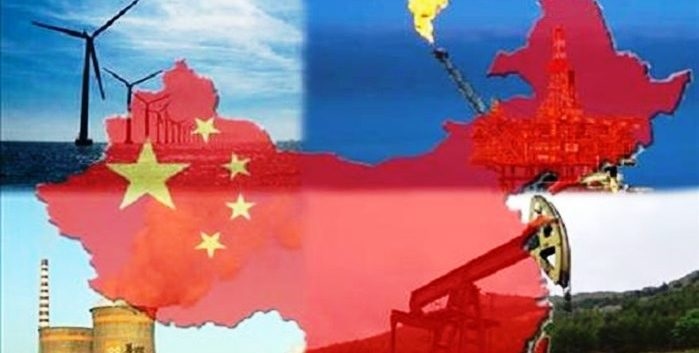Kategori : NATURAL GAS ENERGY NEWS, ELECTRICITY ENERGY NEWS, ENERGY AGENDA NEWS, COAL NEWS, OIL & FUEL SECTOR NEWS - Tarih : 02 October 2020
China has become the center of gravity for global energy markets. While energy demand growth has slowed or stopped in the Organisation for Economic Co-operation and Development (OECD) countries, China’s primary energy demand increased by more than 45% over the last decade. Going forward, the question is whether such growth will continue and how China’s energy system will change in response to the dual challenges of climate change and local pollution.
China is highly dependent on fossil fuel imports. It is the world’s largest importer of oil and natural gas and is an important coal importer as well. At the same time, China is striving to lead in  new energy technologies, particularly wind and solar electricity generation and electric vehicles. To understand how China fits into energy markets and how energy shapes its policy, examining the electricity and oil and gas industries separately is illustrative. China is more in charge of its own fate in electricity, while it remains highly vulnerable to market conditions and supply shocks in oil and gas.
new energy technologies, particularly wind and solar electricity generation and electric vehicles. To understand how China fits into energy markets and how energy shapes its policy, examining the electricity and oil and gas industries separately is illustrative. China is more in charge of its own fate in electricity, while it remains highly vulnerable to market conditions and supply shocks in oil and gas.
ELECTRICITY
As a result of rapid economic growth, demand for electricity in China in 2019 was more than five times its level in 2000. Demand growth slowed slightly in the last decade, but still averaged about 7% per year. As a result, China has added vast generation capacity of every type.
Coal still dominates the Chinese power sector, although its share of generation dropped from its high point of 81% in 2007 to 66% in 2019. During the decade from 2000-2019, China added 493 gigawatts of coal-fired generation capacity. Natural gas generation has also grown rapidly since 2014, but from a much smaller base, and reached 3.2% of Chinese power generation in 2019.
Coal additions were particularly rapid during the 12th Five-Year Plan, from 2011 through 2015, as China encouraged the construction of coal-fired power plants to stimulate growth as the economy recovered from the global financial crisis. However, this situation led to overcapacity, and the subsequent 13th Five-Year Plan, for 2016 through 2020, aimed to contain growth in coal-fired power. Nonetheless, China is still experiencing overcapacity of coal-fired generation, with its plants running at less than 50% of capacity on average in 2019.
The upcoming 14th Five-Year Plan, for 2021 through 2025, will be a key document in mapping the future of China’s electricity system. China’s Nationally Determined Contribution (NDC) under the Paris Agreement calls for its greenhouse gas emissions to peak no later than 2030. However, the behemoth State Grid Corporation and the China Electricity Council are both pushing for inclusion of more coal-fired power in the new plan, in part to encourage economic recovery from the COVID-19 pandemic. Building more coal, even the most efficient ultra-supercritical plants, is not consistent with China meeting its NDC, and certainly not consistent with the world’s overall climate goals.
As demand for new coal-fired power plants has declined in China, the country is financing and building significant new capacity abroad…
As demand for new coal-fired power plants has declined in China, the country is financing and building significant new capacity abroad, particularly through the Belt and Road Initiative (BRI). As of 2017, China had committed to or offered financing for more than one-quarter of the world’s coal-fired capacity being built outside of China, often with Chinese companies as the engineering, procurement, and construction contractors. Additionally, 23% of these projects are for subcritical technology, the least advanced and most polluting form of coal-fired generation. China is becoming the lender of last resort for coal-fired generation, as many international banks are no longer financing coal-fired power projects. An important goal of financing these projects abroad is to keep excess Chinese industrial capacity working.
However, BRI also raises concerns about “white elephant” projects and debt traps in countries that can scarcely afford them. Construction of coal-fired power capacity is no exception. For example, plans for a 6.6 gigawatt coal-fired power plant in Egypt were postponed indefinitely because of concerns about over-capacity and a growing preference for renewable electricity. Similar concerns have been expressed about planned facilities in Pakistan and Bangladesh as power demand falls due to the COVID-19 pandemic, but so far these projects are still going forward, despite overcapacity in power generation.
The rapid growth in China’s renewable energy sector also gets a lot of attention, and rightly so. Over the last decade, China added 36% of the world’s total new renewable (wind and solar) generation capacity. At their peak in 2017, wind and solar capacity additions in China were 45% of the global total. Despite these vast additions, in 2019 wind and solar together still made up less than 10% of China’s power generation, with wind at 5.5% and solar at 3.0%.
Source: Brookings.Edu





